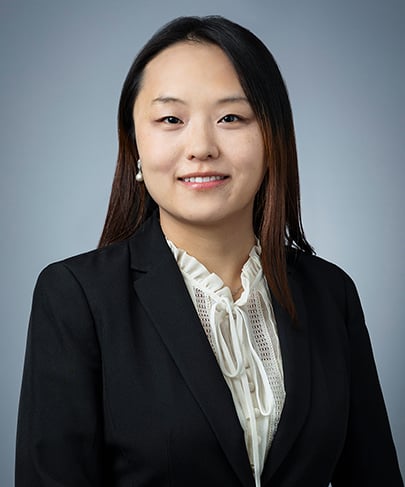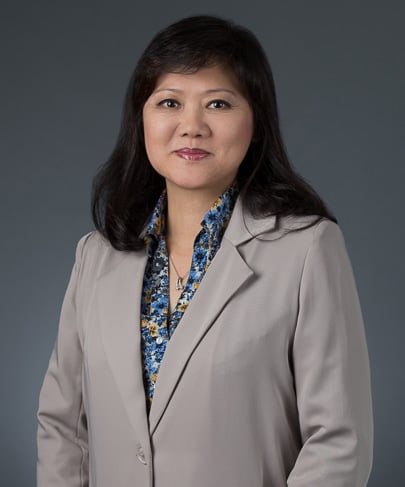Will Washington’s Decoupling Agenda Delay the EV Transition | 华盛顿的战略脱钩计划会延缓电气化的转型吗?
DOWNLOAD PDF- Heusel, Mark Wang, Hezi
- Industry Alerts
Click “Subscribe Now” to get attorney insights on the latest developments in a range of services and industries.
For years, U.S. automakers pushed back against Asia’s move towards Battery Electric Vehicles (BEV), allowing Chinese OEMs and suppliers to develop technologies and gain a firm foothold in electrification. And, then, in a flip of a switch, the Big 3 decided to jump in the game with both feet, but at a distinct disadvantage as the initiative was already years in development in Asia, and U.S. lawmakers were indifferent to supporting any transition away from oil. While the industry announced major investments, Washington was having more difficulty seeing the future. Then, in August 2021, President Biden took a historic step by calling for OEMs to produce 50% of their new U.S. vehicles with zero-emissions by 2030. As a result, 2022 was a remarkable year for transformation from internal combustion engines to battery-powered electric vehicles. With the Industry and now Washington firmly behind a transition to BEV, major automakers in the United States have unequivocally pledged to phase out their internal combustion passenger cars for zero-emission vehicle alternatives by the end of this or the next decade. Notable strategic blueprints of these OEMs include, Stellantis’s Dare Forward 2030, Ford’s New Battery Capacity Plan, and GM’s All-Electric Future. Even major Japanese OEMs, who had been wading in the tide of BEV are questioning whether the hybrid play may not be the future.
多年以来,美国汽车制造商没有与亚洲一样参与向纯电动汽车的方向发展,这使中国的汽车制造商以及供应商得以开发其技术并在电气化领域站稳脚跟。然而仅仅一念之间,北美汽车三巨头,尽管由于亚洲国家的电气化发展已开展多年并且美国的立法者对从石油到电气转变的不支持而处于明显的劣势,相继决定加入这场电气化游戏。虽然汽车行业纷纷宣布对电气领域的重大投资,但是华盛顿方面看到的未来确是困难重重。然而,在2021年8月,拜登总统迈出了历史性的一步,呼吁汽车制造商制定目标,计划到2030年在美国生产的50%的新车实现零排放。至此,2022年是从内燃机向电池电动汽车转型的不平凡的一年。随着整个汽车产业以及美国政府坚定地支持向电气化转型,在美国的主要汽车制造商已明确承诺在这一个或下一个十年逐步淘汰内燃机乘用车,转而生产零排放汽车替代品。这些汽车制造商的战略蓝图包括:Stellantis的《Dare Forward 2030》,福特汽车的《新电池容量计划》以及通用汽车的《全电动未来计划》。甚至一些一直涉足电气化浪潮的日本的汽车制造商也开始质疑混合动力的未来。
As OEMs in the U.S. move towards transportation electrification, battery and related component suppliers from East Asia play an important and indispensable role in facilitating these lofty goals on the timetable promoted by the President. 2022 was a big year for these overseas battery manufacturers to shine on the U.S. auto market. With Ford’s recent announcement to contractually align with Contemporary Amperex Technology Co. (CATL), for advanced LFP cells, it is clear that Washington’s go-it-alone mentality is unrealistic in the short-term and unhealthy for an industry that has depended on a global supply chain for decades. The footprints of other well-known battery suppliers from Asia are also crossing the United States. In May 2022, Stellantis and Samsung announced its joint venture for an electric vehicle battery plant in Indiana. In October 2022, Honda and LG Energy Solution jointly announced a $3.5 billion investment to build a joint venture EV battery plant in Ohio. In November 2022, Panasonic Energy began construction on a new lithium battery manufacturing facility in Kansas with Tesla as its primary customer. In December 2022, SK Innovation announced the ground-breaking of a battery manufacturing campus with Ford in Kentucky. And, then there have been major commitments by GM to partner with LG Energy to develop the Ultium EV platform, which GM hopes will secure their place as a leading BEV manufacturer.
随着美国的汽车制造商逐步走向交通电气化,来自东亚的电池和相关零部件的供应商在拜登总统电气化目标的推动下发挥着重要且不可或缺的作用。2022年是这些海外电池制造商在美国车市大放异彩的一年。随着福特汽车最近宣布与宁德时代就先进的LFP动力电池签订合作合同,显然华盛顿方面期望单独生产动力电池的心态在短期内是不现实的,而且这样的心态对于一个依赖于电池全球供应链数十年的汽车产业也来说也是不健康的。来自亚洲的其他知名电池供应商的足迹也正在穿越美国。2022 年 5 月,Stellantis 和三星宣布在印第安纳州成立一家电动汽车电池厂的合资企业。 2022 年 10 月,本田和 LG Energy Solution 联合宣布投资 35 亿美元在俄亥俄州建设一家合资电池工厂。 2022 年 11 月,松下能源开始在堪萨斯州建设新的锂电池制造工厂,特斯拉是其主要客户。2022 年 12 月,SK Innovation 宣布与福特汽车在肯塔基州的电池制造园区破土动工。 此外,通用汽车还做出了与 LG Energy 合作开发 Ultium EV 平台的重大承诺,通用汽车希望通过该平台巩固其作为电动汽车制造商的领先地位。
One inescapable fact that all of these announcements share is that OEMs recognize the importance of East Asia for these products, and it is an acknowledgement that the region, including China, remains key to the U.S. development of BEV. Washington, however, has had an ambivalent understanding of the importance of this dynamic; pushing forward an agenda that both incentivizes production of BEVs in the U.S., but frustrating trade with the region. President Biden’s Executive Order 14037 marked the administration’s moon shot to electrify, but Congress has also aggressively pushed the administration’s agenda. The Infrastructure Investment and Jobs Act, signed into law by President Biden in November 2021, sets aside $7.5 billion for EV charging, including $5 billion for an EV charging formula grant program and a further $2.5 billion for fueling stations. Then, in August 2022, Congress passed the Inflation Reduction Act, which allocates around $374 billion towards climate and energy spending, including tax credits for EV purchases and manufacturing in North America. These tax credits are conditioned on hitting certain content percentages for critical minerals and components sourced from North America – the specifics and feasibility of such sourcing still to be determined.
上述所有消息都说明了一个不可回避的事实,即汽车制造商均认识到了东亚在汽车电池产品领域的重要性,并且承认包括中国在内的东亚仍是支持美国电动汽车发展的关键地区。然而华盛顿方面对这种动态的情形则有着自相矛盾的理解,美国政府一方面持续激励电动汽车的发展,然而另一方面却阻碍与上述重要地区的贸易往来。拜登总统的第14037号行政命令标志着美国政府电气化计划的开始,同时美国国会也积极推动立法的进程。拜登总统于2021年11月签署《基础设施投资和就业法》,该法拨出75亿美元投放在电动汽车充电桩的建造,其中50亿美元将用于电动汽车充电补助计划,剩余的25亿美元用于建造充电站。之后在2022年8月国会通过了《降低通胀法案》,该法案拨款约3, 740亿美元用于气候以及能源方面的支出,其中包括对北美电动汽车采购和制造的税收抵免。这些税收抵免的条件是从北美地区采购的制造电池的关键矿物和组件需要达到一定的百分比 – 该法案下采购的具体要求和可行性仍有待确定。
OEMs understand that the rules around these credits must recognize the importance of these industry dynamics. Case in point, Japanese and South Korean OEMs have suggested that the rules adopt “flexible thinking” for the new EV tax credits, including how quickly the battery supply chain can be localized. Although U.S. OEMs are ramping up their vertical integration of battery supply chains from mineral exploration and mining to recycling, it will take time to supply a market quickly moving towards full BEVs. Until then, the industry understands that East Asia plays a vital role in battery cell production up and down the supply chain. In fact, the top 10 battery producers today are all from East Asia.
汽车制造商们明白,围绕这些税收抵免的政策必须认识到电动汽车行业动态的重要性。一个典型的例子是,日本和韩国的汽车制造商们建议在这些政策下对电动汽车的税收抵免政策采取“灵活的思维,” 包括需要考虑到电池供应了本土化的速度。尽管美国的汽车制造商们正在加速从矿产勘探和采矿到回收的电池供应链的垂直整合,但要供应一个快速转向全电动汽车的市场还需要时间。在此之前,业界普遍认同东亚在供应链上下游的电池生产中发挥着至关重要的作用。事实上,当今排名前 10 位的电池生产商都来自东亚。
|
Top 10 EV Battery Manufacturers 十大电池生产商
|
Market Share in 2022 2022年的市场份额 |
|
CATL (Chinese) 宁德时代 – 中国 |
34% |
|
LG Energy Solution (Korean) LG集团 – 韩国 |
14% |
|
BYD (Chinese) 比亚迪 – 中国 |
12% |
|
Panasonic (Japanese) 松下 – 日本 |
10% |
|
SK Innovation (Korean) SK 创新 – 韩国 |
7% |
|
Samsung SDI (Korean) 三星 – 韩国 |
5% |
|
CALB (Chinese) |
4% |
|
Guoxuan (Chinese) 国轩 – 中国 |
3% |
|
Sunwoda (Chinese) 欣旺达 – 中国 |
2% |
|
SVOLT (Chinese) 蜂巢能源 – 中国 |
1% |
|
Source (数据来源): https://www.visualcapitalist.com/the-top-10-ev-battery-manufacturers-in-2022/ |
|
As U.S. OEMs partner with East Asian Suppliers to produce battery cells, packs and modules, they are actually fulfilling one of the goals of the prior (Trump) administration: To localize production and create U.S. jobs. Yet, some politicians continue to view these alignments with derision. In December 2022, Virginia’s Governor refused to incentivize the Ford-CATL battery plant project in Virginia, because of his fear that Ford would be a front to the Chinese Communist Party (CCP). Eschewing the opportunity for over $3B of investment and 2500 jobs from Ford Motor Company, a U.S. company fully in control of the project, is certainly noteworthy but not isolated. In fact, other governors, members of congress, and state legislators continue to connect Chinese investment with the CCP – some states are even passing laws preventing foreign companies from owning real estate in their state. This bell-ringing is very similar to the fearful warnings launched in the 1980’s about Japanese investment in the U.S. Citing national security concerns, Congress has also recently proposed and adopted laws negatively impacting foreign investment in the U.S., particularly for investment from China. Many are familiar with the active role that the Committee on Foreign Investment in the U.S. (CFIUS) has played in vetting foreign companies doing business in the U.S., but there is no shortage of proposed legislation sitting in Congress today aimed at investment from East Asia. For example, the proposed American Critical Mineral Independence Act of 2021 aims to reduce reliance on critical minerals sourced from East Asia. Although not definitive, the global list of “critical minerals” includes lithium, nickel, cobalt and other rare earth elements that are indispensable for EV battery production. Case in point, the U.S. and the Democratic Republic of Congo (DRC) and Zambia signed an MOU to develop jointly a supply chain for EV batteries. The DRC produces more than 70% of the world’s cobalt and Zambia is the world’s sixth largest copper producer and second largest cobalt producer in Africa.
随着美国汽车制造商与东亚供应商合作生产电池、模块和电池组,他们实际上正在实现前任总统特朗普执政时期的一项目标:即实现本地化生产并为美国创造就业机会。然而即便如此,一些美国政客仍然继续不看好这些合作。2022年12月,弗吉尼亚州州长拒绝为福特汽车和宁德时代在弗吉尼亚的电池厂项目提供政府激励计划的支持,理由是担心福特汽车会成为中国共产党的幌子。事实是,福特汽车完全控制了整个项目,并且该项目的投资超过30亿美元且将提供2,500个工作机会。拒绝这个机会引起了广泛的关注,但这并不是偶一事件。事实上,另一些州长,国会成员以及州立法者们继续将这些来自中国的投资项目与中国共产党联系起来 --- 一些州甚至通过立法禁止海外公司拥有该州的不动产。这与早在上世纪80年代就日本在美投资发出的警告非常相似。出于对国家安全的考虑,国会已经提议并通过了一些对境外在美投资有负面影响的法律,尤其是针对来自中国的投资。许多读者们都熟悉美国外国投资委员会在审核境外企业在美经营方面发挥的作用,但是如今在国会不乏针对东亚国家投资的提议法案。例如,拟议的《2021 年美国关键矿产独立法案》旨在减少对来自东亚的关键矿产的依赖。虽然对“关键矿产”的定义尚未明确,但是《全球关键矿物清单》包括了生产电动汽车电池不可或缺的锂、镍、钴和其他稀土元素。再例如,美国已与刚果民主共和国和赞比亚签署了一份谅解备忘录,共同开发电动汽车电池供应链。 刚果民主共和国生产世界上 70% 以上的钴,赞比亚是世界第六大铜生产国和非洲第二大钴生产国。
Despite the calls for de-coupling from China and growing nationalism here and abroad, trade and industry continue to march on. After President Biden and President Xi’s meeting in Indonesia in November 2022, the world’s most important economic relationship finally returned to the negotiation table for global trade talks. On January 18, 2023, Secretary of Treasury Yellen met with the Chinese’s top trade negotiator Liu He in Switzerland, where both agreed to enhance frank exchange with each other.
尽管美国政府呼吁与中国脱钩,国内外民族主义情绪高涨,但贸易和工业仍在继续前进。 继拜登总统和习主席于 2022 年 11 月在印度尼西亚举行会晤后,世界上最重要的经济关系终于回到了全球贸易谈判的谈判桌上。 2023年1月18日,美国财长耶伦在瑞士会见中国首席贸易谈判代表刘鹤,双方同意加强坦诚交流。
While the U.S.’s walk towards electrification independence is unmistakable, the industry realizes this is a marathon and not a sprint. Until that time that the U.S. shores up its exploration, mining, researching and manufacturing capabilities for batteries, East Asia will play an important role in the U.S.’s transition to BEV. As foreign suppliers continue to expand their operations in the U.S. with their investment and technology, they are bringing to the U.S. considerable manufacturing capacities and employment opportunities, which inevitably supports the U.S. auto industry’s transition to battery electric vehicles.
虽然美国走向电气化独立的步伐是明确无误的,但业界意识到这是一场马拉松,而不是短跑。 在美国加强其电池勘探、采矿、研究和制造能力之前,东亚将在美国向全面电气化的过渡中发挥重要作用。随着国外供应商继续通过投资和技术扩大在美国的业务,他们正在为美国带来可观的制造能力和就业机会,这不可避免地支持美国汽车工业向纯电动汽车的过渡。
Related Practices
Contacts

Recent Insights
- Industry Alerts Plugged In: An EV Newsletter - Vol. 1, No. 3
- Industry Alerts Plugged In: An EV Newsletter Vol. 1 No. 9
- Industry Alerts Plugged In: An EV Newsletter - Vol. 1 No. 1
- July 09, 2024 Industry Alerts The Cost of a Trade War: Reflections from China and EVs Caught in the Cross-hairs 一 场贸易战的代价: 中国之行和电动汽车陷入的困境的一些反思
- June 26, 2024 In the News Mark Heusel and Hezi Wang's article, "Tariffs on Chinese Goods Target a New Sector of Concern," was recently published by Directors & Boards.
- June 20, 2024 Industry Alerts Plugged In: An EV Newsletter Vol. 2 , No. 6
- May 14, 2024 Industry Alerts USTR to Take Further Actions on China 301 Tariffs
- May 07, 2024 Industry Alerts FTCはほとんどの競業避止義務から従業員を解放したが、禁止はどこまで続くのでしょうか?
- February 14, 2023 In the News Dickinson Wright Assists CATL in their Framework Agreement with Ford Motor Company


